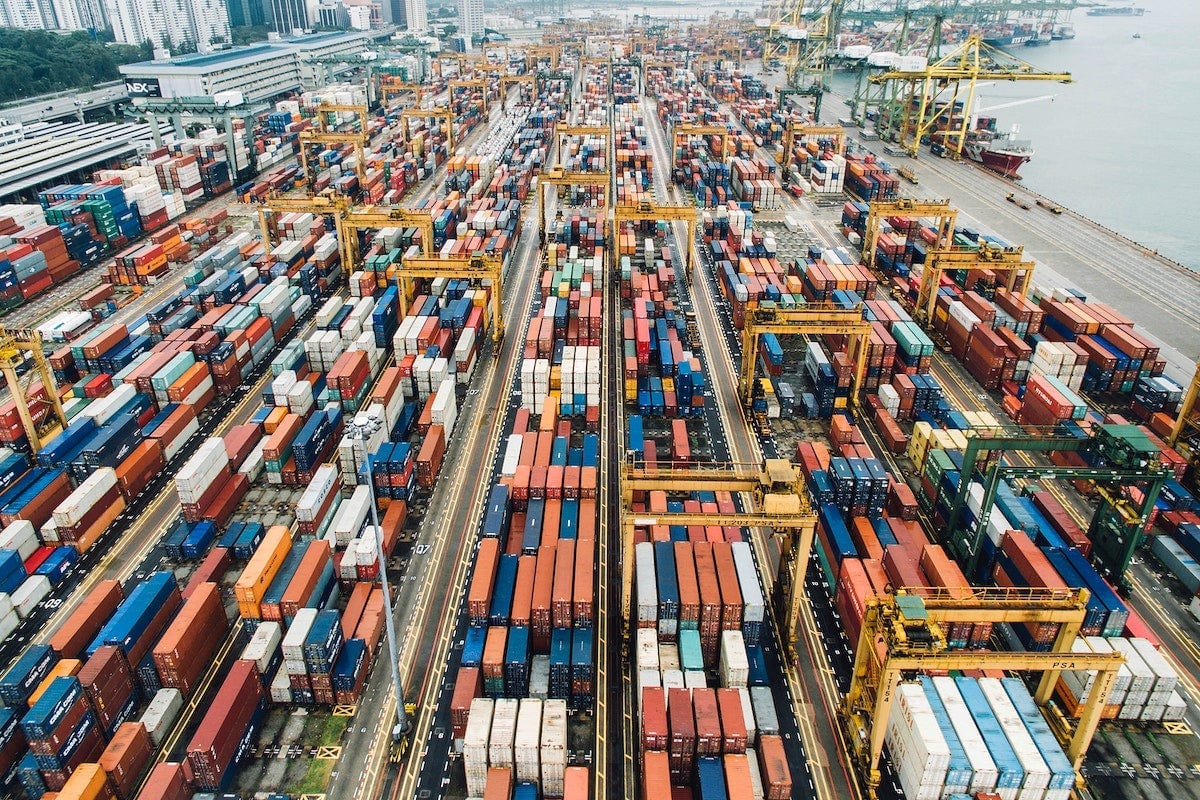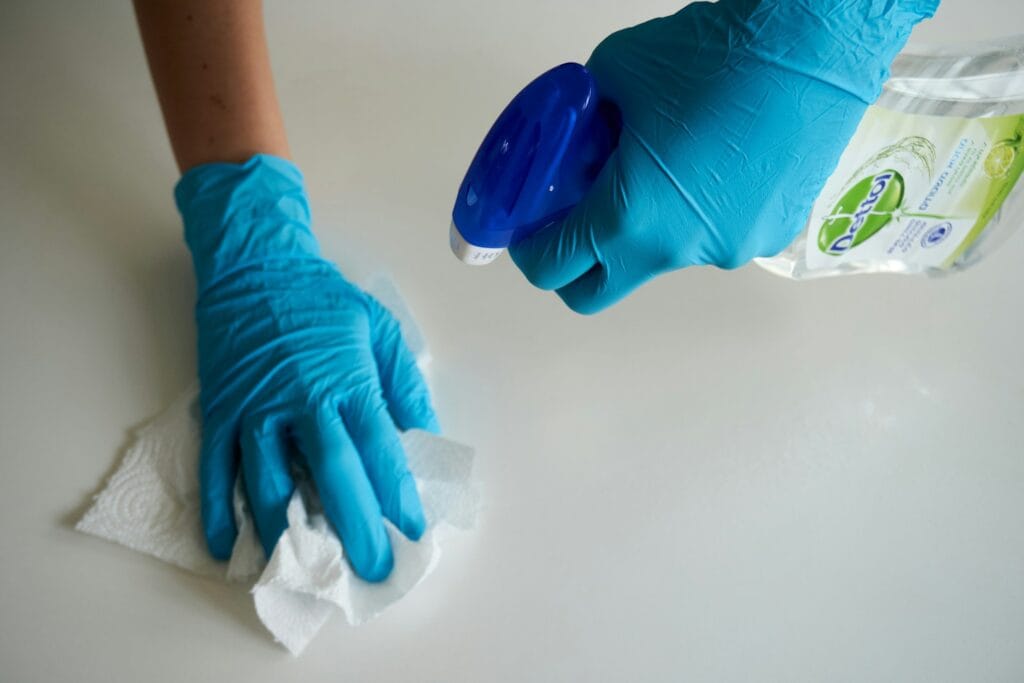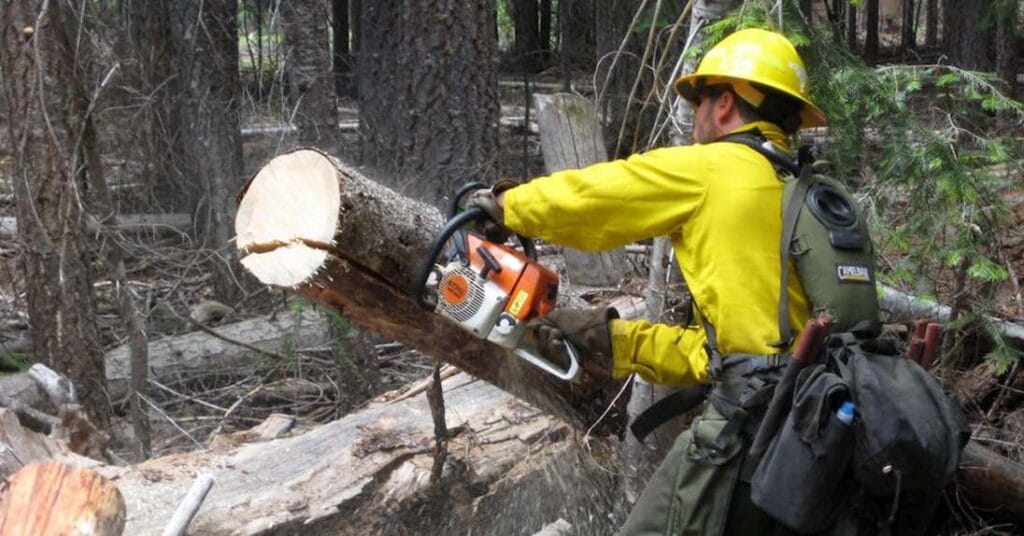
Certificates & Compliance: Spotting Fakes and Staying Legal
In global workwear and PPE trade, certificates are your currency of trust.
They decide whether your shipment passes customs, wins tenders, or gets rejected at the border.
But here’s the danger: fake or invalid certificates are everywhere.
Every month, dozens of importers in Africa, South America, and the Middle East lose money because of false CE marks, expired test reports, or unverified standards.
This article will help you understand compliance, spot fake certificates, and build a reliable verification process that keeps your business legal and profitable.
Google Snippet: Quick Answer
Verify every CE, EN, or ISO certificate directly with the testing lab. Check that the manufacturer name, report number, and validity date match. Use accredited bodies like TÜV, SGS, or Intertek. Fake certificates can lead to customs rejection, fines, or project loss. Always request full reports — never trust screenshots.
Why Compliance Matters in the Workwear Business
Compliance is more than a formality — it’s your ticket to international trade.
-
Customs and tender requirements
Most African, Middle Eastern, and Latin American buyers now require CE or ISO-certified PPE for government tenders or multinational projects. -
Legal and financial risk
Using fake or expired certificates can lead to shipment seizures, fines, and contract cancellation. -
Market access and reputation
Verified certification gives you credibility and repeat business. Distributors with authentic compliance records often become preferred suppliers.
💬 “A real certificate opens markets. A fake one closes them forever.”
Real-World Cases
Case 1 – South America: Fake CE, Real Damage
A Brazilian importer bought 20,000 reflective vests labeled as “CE certified.”
At customs, officers discovered the CE number was registered to a medical device, not PPE.
Result: container held for 45 days, $12,000 in storage costs, and a lost retail contract.
Lesson: Always confirm CE validity directly with the notified body.
Case 2 – Africa: Tender Lost Over Invalid Reports
A Nigerian supplier bid for an oil company project that required EN ISO 11612 flame-resistant coveralls.
The supplier used a test report from an unaccredited lab. During audit, the report was rejected.
A competitor with valid Intertek certificates won the contract worth $300,000.
Lesson: Only use labs accredited by CNAS, ILAC, or equivalent international bodies.
Case 3 – Middle East: Customs Block Due to Missing EN Code
A distributor in Dubai imported safety shoes with a CE mark but no EN standard listed.
Customs requested the full test report; the seller couldn’t provide it.
Result: shipment detained, and distributor blacklisted by a major construction client.
Lesson: CE alone isn’t enough — it must show the correct EN or ISO standard.
Case 4 – Egypt: Compliance as a Competitive Edge
An Egyptian importer took the opposite approach.
He built a public “certificate library” on his website, listing each product’s lab report and QR link.
This transparency won him two government tenders and a long-term partnership with an EU contractor.
Key Workwear Standards & Certifications
| Certificate / Standard | Region | Covers | Example Products |
|---|---|---|---|
| CE Marking | Europe | General product safety for PPE | All workwear & PPE |
| EN ISO 20471 | Europe | High-visibility garments | Reflective vests, jackets |
| EN ISO 11612 | Europe | Flame & heat resistance | FR coveralls |
| EN 343 | Europe | Waterproofing & breathability | Rainwear |
| EN 374 | Europe | Chemical protection | Gloves |
| EN 20345 | Europe | Safety footwear | Boots |
| ANSI/ISEA 107 | USA | Hi-Vis apparel | Safety jackets |
| ANSI Z87.1 | USA | Eye protection | Goggles, glasses |
| ISO 9001 | Global | Quality management | Factory systems |
| ISO 45001 | Global | Occupational safety management | Factory systems |
How to Verify Certificates Step-by-Step
| Step | Action | Details |
|---|---|---|
| 1️⃣ Request full reports | Ask for official PDF, not screenshots | Ensure file includes lab name and signature |
| 2️⃣ Check lab accreditation | Must be ISO 17025 certified | Verify via CNAS (China), ILAC (international) |
| 3️⃣ Confirm factory name | Must match the certificate exactly | Watch for different entities |
| 4️⃣ Verify report with lab | Email or contact via website | Labs respond in 1–2 working days |
| 5️⃣ Check expiry date | Most valid for 3–5 years | Expired reports = invalid |
| 6️⃣ Match standards | Ensure standard version is current | e.g., EN ISO 20471:2013/A1:2016 |
✅ Pro Tip: A trustworthy supplier will never hesitate to provide verifiable certificates.
Real vs Fake Certificate Comparison
| Feature | Authentic Certificate | Fake or Invalid Certificate |
|---|---|---|
| Issuer | Recognized lab (SGS, TÜV, Intertek) | Unknown or local testing center |
| Report number | Traceable online | Random or missing |
| Company name | Matches business license | Mismatched or blank |
| Expiry date | Clearly stated (3–5 years) | None or unrealistic |
| Standard code | Exact EN/ANSI reference | Typos or outdated |
| QR code | Scannable, links to lab record | Missing or fake |
| PDF metadata | Includes lab author & date | Generic document |
Practical Tools
🔍 Certificate Verification Flowchart
Supplier → Provides Certificate ↓ Check Lab Accreditation → ISO 17025? ↓ Match Factory Name & Product ↓ Verify Report Number with Lab ↓ Check Validity & Standard Version ↓ ✅ Use for Customs & Tender / ❌ Reject & Request New Docs
📧 Certificate Verification Email Template
Subject: Certificate Verification Request – EN ISO 20471
Dear [Testing Lab],
We are verifying a PPE certificate provided by our supplier.
Please confirm if the following document is valid:
- Certificate No: CE-20471-2024-5890
- Manufacturer: Suzhou SafeTex Garments Co., Ltd.
- Product: Reflective Vest
- Issue Date: 2024-05-15
Thank you for your assistance.
Best regards,
[Your Name]
[Company Name]
[Country]
✅ Certificate Verification Checklist
| Task | Details | Done |
|---|---|---|
| Request full CE/EN/ANSI report | PDF, not image | ☐ |
| Check lab accreditation (CNAS/ILAC) | ISO 17025 required | ☐ |
| Match supplier & factory name | Legal entity check | ☐ |
| Verify report with issuing lab | Email confirmation | ☐ |
| Confirm expiry & standard version | Still valid? | ☐ |
| Store verified docs | For customs/tender use | ☐ |
Buyer Insights: Common Mistakes to Avoid
- Relying on screenshots — Always ask for official PDF reports.
- Ignoring lab verification — Contact the testing body directly.
- Assuming CE mark = compliance — CE logo alone is meaningless without EN code.
- Using expired reports — Many standards get updated every few years.
- Not matching company names — Certificates issued for another factory are invalid.
💡 Smart buyers treat certificates as contracts of trust, not decoration.
Conclusion
In the PPE and workwear business, compliance is your strongest competitive weapon.
Fake documents may win you one deal — but real certificates build a lifetime of credibility.
Before your next shipment:
- Verify every report
- Build a trusted supplier list
- Keep certificates organized and traceable
✅ Compliance builds confidence. Confidence builds contracts.
📩 Need a free Certificate Verification Checklist or lab contact list?
Email: [email protected]
🌐 Visit www.workwearsolutions.net

Certificates & Compliance: Spotting Fakes and Staying Legal
In global workwear and PPE trade, certificates are your currency of trust.
They decide whether your shipment passes customs, wins tenders, or gets rejected at the border.
But here’s the danger: fake or invalid certificates are everywhere.
Every month, dozens of importers in Africa, South America, and the Middle East lose money because of false CE marks, expired test reports, or unverified standards.
This article will help you understand compliance, spot fake certificates, and build a reliable verification process that keeps your business legal and profitable.
Google Snippet: Quick Answer
Verify every CE, EN, or ISO certificate directly with the testing lab. Check that the manufacturer name, report number, and validity date match. Use accredited bodies like TÜV, SGS, or Intertek. Fake certificates can lead to customs rejection, fines, or project loss. Always request full reports — never trust screenshots.
Why Compliance Matters in the Workwear Business
Compliance is more than a formality — it’s your ticket to international trade.
-
Customs and tender requirements
Most African, Middle Eastern, and Latin American buyers now require CE or ISO-certified PPE for government tenders or multinational projects. -
Legal and financial risk
Using fake or expired certificates can lead to shipment seizures, fines, and contract cancellation. -
Market access and reputation
Verified certification gives you credibility and repeat business. Distributors with authentic compliance records often become preferred suppliers.
💬 “A real certificate opens markets. A fake one closes them forever.”
Real-World Cases
Case 1 – South America: Fake CE, Real Damage
A Brazilian importer bought 20,000 reflective vests labeled as “CE certified.”
At customs, officers discovered the CE number was registered to a medical device, not PPE.
Result: container held for 45 days, $12,000 in storage costs, and a lost retail contract.
Lesson: Always confirm CE validity directly with the notified body.
Case 2 – Africa: Tender Lost Over Invalid Reports
A Nigerian supplier bid for an oil company project that required EN ISO 11612 flame-resistant coveralls.
The supplier used a test report from an unaccredited lab. During audit, the report was rejected.
A competitor with valid Intertek certificates won the contract worth $300,000.
Lesson: Only use labs accredited by CNAS, ILAC, or equivalent international bodies.
Case 3 – Middle East: Customs Block Due to Missing EN Code
A distributor in Dubai imported safety shoes with a CE mark but no EN standard listed.
Customs requested the full test report; the seller couldn’t provide it.
Result: shipment detained, and distributor blacklisted by a major construction client.
Lesson: CE alone isn’t enough — it must show the correct EN or ISO standard.
Case 4 – Egypt: Compliance as a Competitive Edge
An Egyptian importer took the opposite approach.
He built a public “certificate library” on his website, listing each product’s lab report and QR link.
This transparency won him two government tenders and a long-term partnership with an EU contractor.
Key Workwear Standards & Certifications
| Certificate / Standard | Region | Covers | Example Products |
|---|---|---|---|
| CE Marking | Europe | General product safety for PPE | All workwear & PPE |
| EN ISO 20471 | Europe | High-visibility garments | Reflective vests, jackets |
| EN ISO 11612 | Europe | Flame & heat resistance | FR coveralls |
| EN 343 | Europe | Waterproofing & breathability | Rainwear |
| EN 374 | Europe | Chemical protection | Gloves |
| EN 20345 | Europe | Safety footwear | Boots |
| ANSI/ISEA 107 | USA | Hi-Vis apparel | Safety jackets |
| ANSI Z87.1 | USA | Eye protection | Goggles, glasses |
| ISO 9001 | Global | Quality management | Factory systems |
| ISO 45001 | Global | Occupational safety management | Factory systems |
How to Verify Certificates Step-by-Step
| Step | Action | Details |
|---|---|---|
| 1️⃣ Request full reports | Ask for official PDF, not screenshots | Ensure file includes lab name and signature |
| 2️⃣ Check lab accreditation | Must be ISO 17025 certified | Verify via CNAS (China), ILAC (international) |
| 3️⃣ Confirm factory name | Must match the certificate exactly | Watch for different entities |
| 4️⃣ Verify report with lab | Email or contact via website | Labs respond in 1–2 working days |
| 5️⃣ Check expiry date | Most valid for 3–5 years | Expired reports = invalid |
| 6️⃣ Match standards | Ensure standard version is current | e.g., EN ISO 20471:2013/A1:2016 |
✅ Pro Tip: A trustworthy supplier will never hesitate to provide verifiable certificates.
Real vs Fake Certificate Comparison
| Feature | Authentic Certificate | Fake or Invalid Certificate |
|---|---|---|
| Issuer | Recognized lab (SGS, TÜV, Intertek) | Unknown or local testing center |
| Report number | Traceable online | Random or missing |
| Company name | Matches business license | Mismatched or blank |
| Expiry date | Clearly stated (3–5 years) | None or unrealistic |
| Standard code | Exact EN/ANSI reference | Typos or outdated |
| QR code | Scannable, links to lab record | Missing or fake |
| PDF metadata | Includes lab author & date | Generic document |
Practical Tools
🔍 Certificate Verification Flowchart
Supplier → Provides Certificate ↓ Check Lab Accreditation → ISO 17025? ↓ Match Factory Name & Product ↓ Verify Report Number with Lab ↓ Check Validity & Standard Version ↓ ✅ Use for Customs & Tender / ❌ Reject & Request New Docs
📧 Certificate Verification Email Template
Subject: Certificate Verification Request – EN ISO 20471
Dear [Testing Lab],
We are verifying a PPE certificate provided by our supplier.
Please confirm if the following document is valid:
- Certificate No: CE-20471-2024-5890
- Manufacturer: Suzhou SafeTex Garments Co., Ltd.
- Product: Reflective Vest
- Issue Date: 2024-05-15
Thank you for your assistance.
Best regards,
[Your Name]
[Company Name]
[Country]
✅ Certificate Verification Checklist
| Task | Details | Done |
|---|---|---|
| Request full CE/EN/ANSI report | PDF, not image | ☐ |
| Check lab accreditation (CNAS/ILAC) | ISO 17025 required | ☐ |
| Match supplier & factory name | Legal entity check | ☐ |
| Verify report with issuing lab | Email confirmation | ☐ |
| Confirm expiry & standard version | Still valid? | ☐ |
| Store verified docs | For customs/tender use | ☐ |
Buyer Insights: Common Mistakes to Avoid
- Relying on screenshots — Always ask for official PDF reports.
- Ignoring lab verification — Contact the testing body directly.
- Assuming CE mark = compliance — CE logo alone is meaningless without EN code.
- Using expired reports — Many standards get updated every few years.
- Not matching company names — Certificates issued for another factory are invalid.
💡 Smart buyers treat certificates as contracts of trust, not decoration.
Conclusion
In the PPE and workwear business, compliance is your strongest competitive weapon.
Fake documents may win you one deal — but real certificates build a lifetime of credibility.
Before your next shipment:
- Verify every report
- Build a trusted supplier list
- Keep certificates organized and traceable
✅ Compliance builds confidence. Confidence builds contracts.
📩 Need a free Certificate Verification Checklist or lab contact list?
Email: [email protected]
🌐 Visit www.workwearsolutions.net
Zion Zhang
Recent Posts
 How to Build a Local Distribution Network That Works2025年10月10日In emerging markets across Africa, the Middle East, Central […]
How to Build a Local Distribution Network That Works2025年10月10日In emerging markets across Africa, the Middle East, Central […] Choosing the Right Sales Channels for Workwear in Emerging Markets2025年10月10日In fast-growing markets across Africa, the Middle East, […]
Choosing the Right Sales Channels for Workwear in Emerging Markets2025年10月10日In fast-growing markets across Africa, the Middle East, […] Building Long-Term Supplier Relationships: From First Order to Partnership2025年10月10日In the world of global workwear trade, many new importers […]
Building Long-Term Supplier Relationships: From First Order to Partnership2025年10月10日In the world of global workwear trade, many new importers […] Costing & Profit Margins: Calculating the Real Numbers2025年10月9日When importing workwear or PPE from China, the biggest […]
Costing & Profit Margins: Calculating the Real Numbers2025年10月9日When importing workwear or PPE from China, the biggest […] Logistics & Payment Methods: Reducing Risk in Cross-Border Trade2025年10月9日If you’ve ever imported workwear or PPE from China, you […]
Logistics & Payment Methods: Reducing Risk in Cross-Border Trade2025年10月9日If you’ve ever imported workwear or PPE from China, you […] Quality Control & Pre-Shipment Inspection: Avoiding Expensive Surprises2025年10月7日In international workwear trade, one of the most painful […]
Quality Control & Pre-Shipment Inspection: Avoiding Expensive Surprises2025年10月7日In international workwear trade, one of the most painful […]
